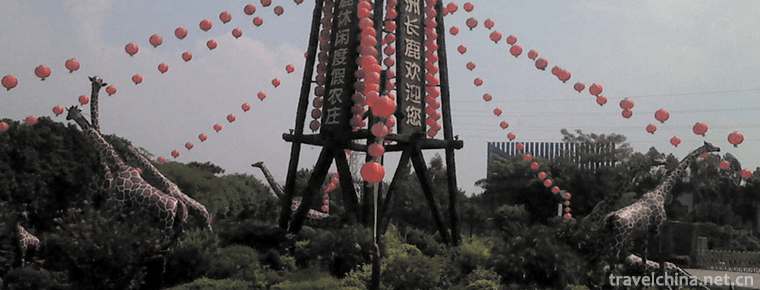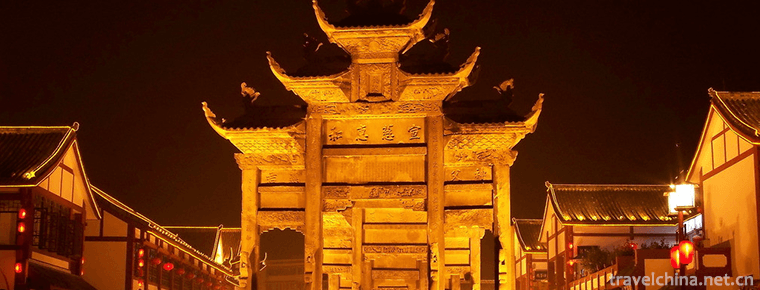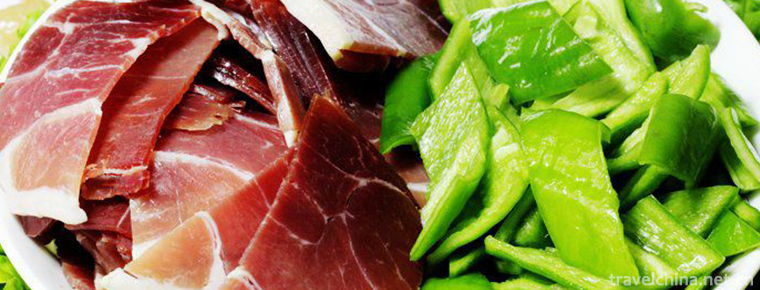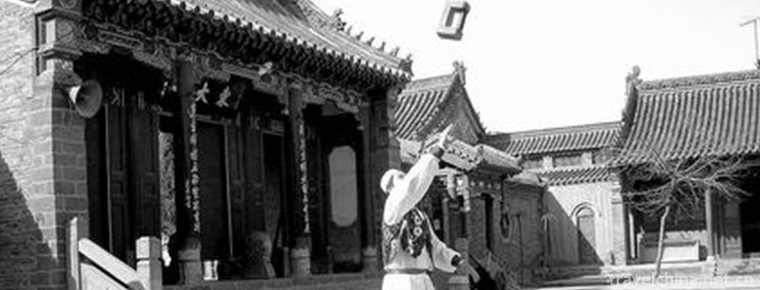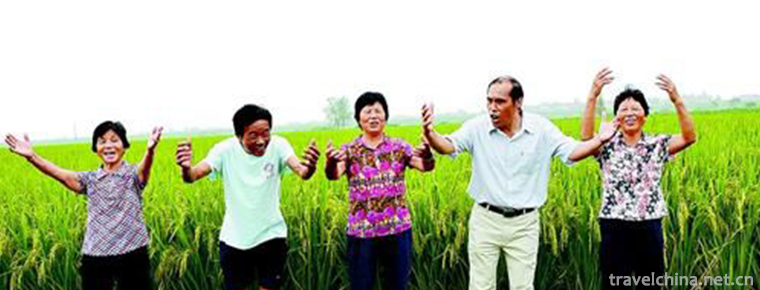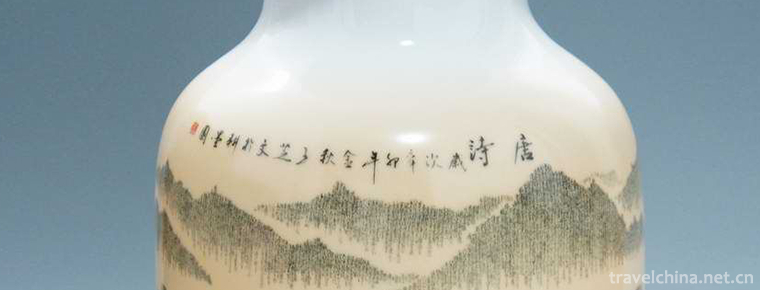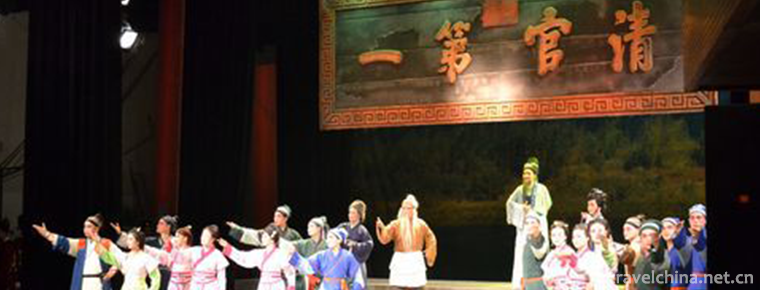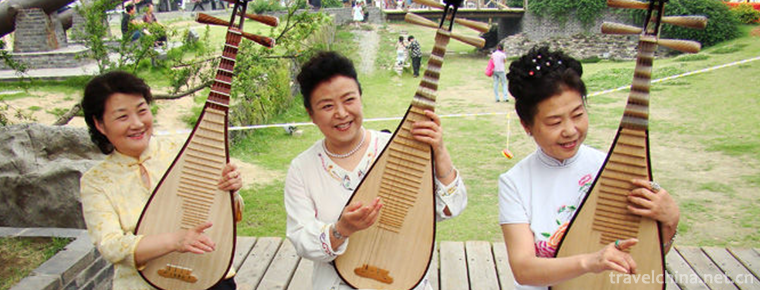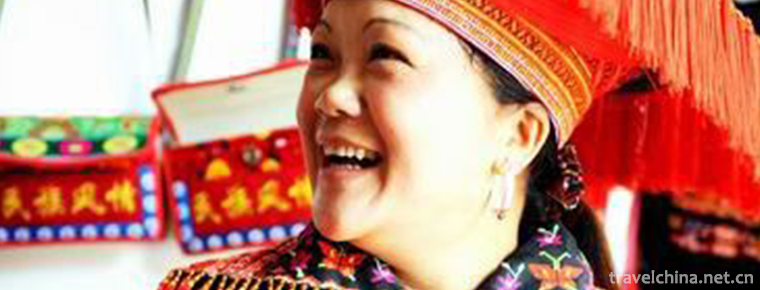Cloth tiger
Cloth tiger
Cloth tiger is a kind of traditional handicraft which has been widely spread among Chinese people in ancient times. It is also a good toy for children, indoor decoration, gift and personal collection. It is a kind of folk handicraft with a very local flavor because of its variety and wide spread.
On June 7, 2008, Butiger was approved by the State Council to be included in the second batch of national intangible cultural heritage list.
Historical origin
Tracing back to its origin, the cloth tiger originated from the tiger totem worship. In primitive society, thunder, lightning, beasts, human vulnerability, powerful tigers are regarded as the strongest in the world. Tigers are not only invincible, but also have special protection for their babies. There is a folk saying that "tiger poison does not eat food". Therefore, people regard tigers as the gods of life protection and reproduction. Cloth tiger pillow is a common form of expression of the custom of worshipping tigers in folk customs, which contains profound cultural connotations. The double-headed tiger pillow is a maternal body symbolizing the combination of yin and yang, which can dispel disasters and protect the safety of dolls. The single-headed tiger and the crouching tiger are the totem tiger type of the town house as the whole family protection god .
The cloth tiger is a traditional Chinese folk art, which is widely spread among the Chinese people. The existence of the cloth tiger originates from the worship of the tiger by the common people. Tiger worship originated in the period of Fuxi. Liu Yaohan, a famous ethnologist, said in his book New Exploration of the Origin of Chinese Civilization: "Fuxi is a totem of tigers. After Qin and Han Dynasties, historians thought that dragon is the true destiny of the emperor." Thus it can be seen that the tiger totem originated from Fuxi and was earlier than the Dragon totem. During the Dragon Boat Festival on the 5th day of the 5th lunar month, it is popular to make cloth tigers for children, or draw tiger faces on children's foreheads with realgar, which implies health, strength and bravery.
The reason why cloth tiger is the representative of cloth toys is that it has a very close relationship with Chinese folk customs, which can be traced back to ancient times. As early as the Neolithic Age, about 6,000 years ago, the primitive tribes had pictures of tigers on pottery, stone and jade. In the tombs unearthed in Yangshao Culture in Henan Province, tigers and dragons lived around the dead, from which we can see the status of tigers in the hearts of the ancestors. In recent decades, a large number of early Han Dynasty rock paintings have been found throughout the country. They also fully show the image of the tiger in nature. The tiger in the paintings is pouncing on the sheep to hunt.
In the era of low social productivity, people can not scientifically understand nature and disease, but can only be attributed to invisible and intangible evil spirits. People hope to overcome it, so they put this hope on the ideal heroes and tigers such beasts. Tigers have their own reasons for being king of animals. From murals in primitive tombs to works of art made of silk, ivory and wood, artists from different cultural backgrounds all praise tigers. Tigers have a strong body and tall body, very powerful. Yellow fur with a black stripe, the clear stripe in the middle of the forehead like a "king" character, but also set off an incomparable bravery, so people will regard it as "king of beasts". The image of tiger also appears in all aspects of social life.
The earliest shape of the cloth tiger can not be studied, but its emergence is closely related to some customs spread in our country. In today's industrial production is more developed, people still like the hand-sewn cloth tiger, because it embodies not only the unique ingenuity and intelligence of Chinese women, but also the expectations and blessings of the older generation to the new generation. From a needle, thread sewing, will be full of love sewn into it. Folk cloth tigers do not have uniform specifications and patterns. Because of the different materials at hand, skillful women create cloth tigers with different shapes according to their own aesthetic concepts.
Existing form
The worship of tigers exists in various national religions. In Taoism, the patron god of Tiger's view of Tianmen, the Western Queen Mother and the Eastern King Gong are half tiger and half human deities. Taoist classics are called "Dragon-Tiger Sutra" and alchemy is called "Dragon-Tiger Dan". In Buddhism, tiger has become a self-cultivation by listening to sutras, and has been trained by Buddhism to serve the propaganda of Buddhism and become a "Zen Tiger" to change evil from good.
In the Yi people, men call Luopo (male tiger) and women call Rama (female tiger) when they hold ancestor worship ceremonies, the Wizards all draw a red baseboard with black tiger head on the convex surface of gourd ladle. The Naxi people also took the tiger as their ancestor. The head of the black tiger was painted in the first volume of the Dongba Sutra, and the head of the black tiger was worshipped for ancestors. The Tujia people worship white tigers.
Think oneself is after Lin Jun. The story of Lin Jun fighting for the people and the God of salt and shooting the God of salt is recorded in The Biography of the Southwest Yi in the Later Han Dynasty. "Lin Jun died, the soul of the world for the white tiger."
Tiger is the symbol of health, people use "tiger head and tiger brain" and "living dragon and living tiger" to describe the strong body; tiger symbolizes the mighty and majestic force; The Book of Songs Luzong Panshui calls the brave minister "Jiaojiao Huchen", "Shangshu Mu Oath" calls King Wu "300 tiger cardia";
The tiger symbolizes power. The state uses military symbols. The festivals held by envoys abroad are called "tiger symbols" and "tiger festival" in the character "tiger symbols". "Tiger Character" is made of copper, which is divided into two parts. Half of them are deposited in the court and half are paid to foreign officials. When the court has something to do, it sends an order to the foreign officials. If the order is half true, that is to say, it can be seen that "Tiger Character" represents the supreme military authority.
Tiger is a symbol of relief and evil spirits, "Customs" said: "In ancient times, there were two brothers, Shencha and Yu Lei, who were devilish in performance. Peach trees on Dushuo Mountain often read hundreds of ghosts. The ghost is unreasonable. Shencha and Yu Lei stick to reed ropes and feed tigers. It is because the county officials often sacrifice the evening with wax, decorating peach people, hanging reeds and ropes, painting tigers in the door to resist the evil. It can be seen that tigers have been painted on the doors since the emperor's time to protect the house from evil and protect the peace.
Buhu Tiger has a large head, a long tail and a strong shape. The whole body is painted with tiger spots and the word "king" is adorned on the top of the head. The eyeballs were embedded in the eyes and have now fallen off. This cloth tiger can be used as a toy in the daytime and a pillow in the evening. It is both beautiful and practical.
Related species
There are many forms of cloth tiger, including single tiger, double tiger, four tigers, mother tiger, lover tiger, pillow tiger, set tiger and so on.
Based on the above factors, people sew tiger caps in the shape of tigers, hoping that children will be as brave and powerful as soldiers wearing tiger helmet armor. Sewing into tiger shoes, so that children born with tiger's eyes on the shoes, a lifetime to take the right path, by the way. Tigers sewed into cloth and covered with peach wood chips are made into good tigers. We hope that children will be as healthy and brave as tigers and bless their lives. Sometimes the nose is made into a bottle, because "bottle" represents "peace" and is called "peace tiger", hoping that tiger will protect the family. Sometimes the tiger is made into a treasure, decorated with fish and copper money, hoping that the tiger can help them to take care of their household property, and sometimes adding cinnabar into their homes to ward off evil spirits.
Cloth tiger is a traditional Chinese handicraft toy. Because tigers are believed to be able to ward off evil spirits and avoid disaster and bring peace and auspiciousness, when a child is born, the gift of cloth tigers places a good wish on the healthy growth of the child. People also think that tigers eat five poisons, so there is also the custom of sending tigers during the Dragon Boat Festival, which expresses people's desire to exorcise evil, dispel disease and pray for good luck.
main features
Alike in spirit
These cloth tigers, yellow cloth foreskin, artificial sewing, distorted the original shape of the tiger, the body and tail are greatly contracted, limbs are shortened. However, the main features of tigers are not neglected at all. Moreover, Tiger Head gives deliberate description. Its big round eyes and grinning teeth
The shape of the mouth is very exaggerated. In addition to the image exaggeration, the tiger's exaggeration is more accurate and vivid. Just like the pursuit of traditional Chinese art, "not like the shape, but like the god". This image of tiger blends the real tiger with the idealized tiger in fantasy. It has human personality and full of human feelings, so it is particularly lovely and charming. These elegant and vulgar works of art, mostly from the hands of rural women, are the crystallization of the diligence and wisdom of folk artists.
Hyperbole
If you look carefully, you can see that the shapes of these tigers are very different, some are steady and quiet, some are lively and clever. These tiger shapes with different styles have a common feature. They are all based on exaggeration and deformation, and deal with the shape of tigers in different ways. This feature is also integrated into the body of folk cloth tigers. Because the customs and habits of different regions and nationalities in China are different, they will inevitably bring different local characteristics. However, no matter how the form changes, the folk cloth tiger follows the basic characteristics of exaggeration and deformation. Different regions and customs will form a variety of cloth tigers with different shapes.
Making method
The materials and techniques for making cloth tigers are also different. It is common to sew cotton cloth and silk into shapes, and to fill the interior with sawdust, chaff, cotton or vanilla. The surface of cloth tigers is painted, embroidered, cut and patched to depict the five features and patterns of tigers. Cloth tiger with big head, big eyes, big mouth, big tail shape to highlight the brave manner, tiger head and five features show naivety and childishness, revealing the same lovely childish manner.
1. Cut out the cloth. Size can be based on their preferences, small pieces of ears, long pieces of stomach.
2. Stitch the front of the cloth relative to each other. Attention
3. Cut a long opening under the belly.
4. Turn the cloth over to the front and add fluffy cotton.
5. Stitch up the opening.
6. When sewing the ear, the cloth face to face, sew the top, and then turn to the bottom of the front suture, pull out the fold.
7. Finally, decorate the face of the cloth tiger, sew the eyes and nose, make a beard with wool, and sew the ears on the head.
The material and technology of making cloth tigers are different. This method I teach you is relatively simple. You can make more exaggerated shapes according to this method. You can also choose more gorgeous cloth to make lovely cloth tigers.
Customs and customs
Beautiful implication
In addition to the Dragon Boat Festival, the Spring Festival, Lantern Festival and other festivals, as well as the new baby "wash three" (three days after the birth of the baby), 100 days, one-year-old birthday, two-year-old birthday, people often do various forms of cloth tigers, also with exorcism, disease, blessings of the good moral.
Different forms
Shanxi folk toys are slightly different due to the differences in geographical conditions and living habits. Southern Shanxi is mainly along the Yellow River and Fenhe River, becoming the Yellow River Delta of Shanxi, Shaanxi and Henan Province. It is located in the valley waterways, gullies, ancient culture and folk customs. The folk toys in this area are relatively simple and elegant; the central Shanxi region is located in the plain area with superior geographical conditions, prosperous economy and culture, rich life, elegant and exquisite folk toys; The area is mostly mountainous and hilly, stuffed on the plateau, folk toys are more vigorous and bold, rough and simple. Although each has its own artistic skills and different interests, it also has a distinct consistency of the charm of the Three Jin Dynasty. Like a sachet, Jinnan mainly sews characters and animals, and takes them in strings. The cloth tiger tramples on snakes, scorpions, geckos, clams, centipedes and five poisonous insects, which are vivid, chaotic and real, with brilliant colors and vivid red, represented by Wenxi, Xinjiang, Jishan, Wanrong and Yongji.
Personification
In Taihao Mausoleum, especially in Fuxi Mausoleum Temple Fair of Taihao from February 2 to March 3 of the lunar calendar, you can see a wide range of cloth tigers everywhere, including single-headed tiger, double-headed tiger, recumbent tiger, toy tiger, pillow tiger, etc., in different shapes and sizes. These tigers are not fierce beasts in the deep mountains and old forests, but decorative and personalized cloth games. They are naive, lively, childish and lovely, like lovely children. Although they are no longer the natural form of tigers, people still think of tigers when they see them.
Production form
Cloth Tiger Pillow
Cloth Tiger Embroidery
Tiger shoes
Cloth tiger curtain
Related Legends
The main habitats of Butiger are concentrated in Shandong, Henan, Shanxi and Shaanxi provinces. There are 17 cities in Shandong Province, especially Weifang, Linyi, Binzhou, Jiaozhou, Jining and Zaozhuang. There are many different versions of the legend about the origin of the cloth tiger everywhere. According to Shanhai Jing, it is said that there is a big peach tree on the Donghai Dushuo Mountain, which stretches 3,000 miles bent and stretches all the way to the ghost gate in the southeast. The ghosts and gods in the cave have to enter and exit from it. Under the tree, there are two brothers, two gods, named Shen Cha and Yu Lei, who are very powerful and skilled. The brothers tamed the tigers on the mountain and ordered them to take good care of the peach trees. Through their hard work, the peach trees grew lush branches and leaves. As they watched the peaches ripen, a group of evil spirits rushed up the hill in an attempt to grab the peaches. The brothers commanded the tigers and ghosts to fight together. The brothers knocked down the ghosts with peach sticks and the brothers tied the ghosts with reed ropes. Overthrow one, tie one, and the tiger will eat one! In a few moments, most of the evil spirits were wiped out, and the rest of the evil spirits fled in confusion. The battle was won, and the names of Shen Tea and Yu Base spread throughout the world. The tiger's fame has also been greatly shocked. It has become the king of beasts and the nemesis of evil spirits. It is a symbol of strength and courage and is regarded as a divine animal by its ancestors. In addition, in the folk dialect, the homonym of "tiger" and "blessing" has cultural connotations such as blessings, town houses and making money. Therefore, tiger-shaped objects are often used to avoid evil.
People regard tigers as the guardian God of children. "Don't cry, little monkey, buy you a cloth tiger; play in the daytime, and frighten'flax'in the night." Folk people like to let children wear tiger shoes, tiger caps and sleeping tiger head pillows on Spring Festival, Lantern Festival and "wash three" (when babies are born three days), 100 days, one-year-old birthday, two-year-old birthday, and on weekdays. In some areas, even small aprons are embroidered into tiger heads. There are also many folk sayings about tigers in Yishui, Shandong Province, such as "lion and tiger are at home, safe and happy", "touch tiger head, eat and wear without worries"; touch tiger mouth, drive away evil spirits; touch tiger back, glory and wealth; touch tiger tail, perfect."
Before the founding of the People's Republic of China, medicine was underdeveloped and many new born babies died. It was really not easy to raise a child to adulthood. Villagers regard the death of their children as evil spirits, while tigers are considered as powerful symbols, capable of subduing everything. Therefore, people regard tigers as the God of protection for the healthy growth of dolls. The women made some tigers out of cloth and left them at home. During the Dragon Boat Festival, the cloth tigers were fitted with mugwort leaves and sewed on the shoulders of the dolls. They were called "Aihu" to "suppress evil and eliminate evil". At the same time, the custom of feeding tiger pillows is popular in southern Shandong. Neonates should be strangled 8-12 days after birth, usually 9 days for girls and 12 days for boys. Commonly known as "Nine Gingers and Ten Gingers, Twelve Gingers and Eight Gingers" and "Twelve Gingers and Eight Gingers and Twelve Gingers and Eight Gingers". Grandma came to hang her head and gave cloth to the tiger to express her blessings.
The cloth tiger has no sharp horns and hard thorns, which highlights the beauty of lumps and conforms to the common modeling rules of folk toys, showing a kind of simple beauty and simple beauty. In Yishui countryside, the cloth tiger grew up with small dolls, toys during the day and pillows at night. Children's pillow is not easy to fall off, very comfortable .
Style characteristics
Because cloth tigers are made by hand, there is no uniform specification and style. Smart women sew cloth tigers of different shapes and shapes with different materials on hand, depending on their imagination and aesthetics. The cloth tiger they sewed changed the original shape of the tiger and exaggerated its head in shape. The size of the tiger's head was almost the same as that of the tiger's body. The tiger's body and tail were greatly contracted, and its four legs were shortened. The eyes, mouth, legs and tail were mostly short and small. The big head, big eyes, big mouth and small body highlighted the brave and dignified manner of the cloth tiger. It highlights the traditional artistic style of "seeking gods instead of resembling shapes".
Due to the different customs and habits of different regions and nationalities in our country, the cloth tiger has different decorations and postures in different regions, some of them are calm and quiet, some of them are lively and clever. For example, as a national cultural card, Shanxi Lihou tiger has the style of military generals Guan Gong, who has stout limbs and standing high-headed; the cloth tiger in Guanzhong area of Shaanxi prefers to use the pattern of "five poisons"; the anthropomorphic cloth tiger in Huaiyang of Henan Province is the materialization and symbol of the early human reproduction worship; the cloth tiger in Shandong Province focuses on the head design, broad mouth, clean and sharp teeth. Teeth, two strong teeth to both sides to show the majesty of the tiger. But the corners of the mouth bend upward, like a giggle, with black and white globular eyes, the black "King" on the forehead, also called the king of beasts become silly.
The cloth tiger made for children in Yishui countryside uses the leftover corners of clothes. It is convenient to use materials, bright colors, exaggerated and deformed in shape, emphasizing on emotional implication, pursuing the features of appearance without sticking to shape, and achieving the purpose of pleasure and interest. It not only reflects farmers'consciousness and folk culture mentality, but also has decorative effect, emphasizing the festive color. What is particularly interesting is that besides the word "king" on the head of the tiger, which can represent the king status of the tiger in the beast, the rounded eyes, straight ears, curving tail, short legs and cats are almost the same. It can not only make people feel the majesty of tigers, but also make people feel the naivety of cats. Drum drum, fat, very lovely. Its main style features:
The color of cloth tiger in Shandong province is mainly red and yellow. Yellow and red are also the festive and auspicious colors in the traditional culture of northern China. But Yishui cloth tiger in color is not rigid in yellow, red two major tones, but also with black, blue, white, flower, blue cloth and blue printing cloth. The contrast of color blocks is strong, warm and lively, which makes the image of the whole cloth tiger vivid.
In addition, the craft of making cloth tiger is also different. For example, inside the tiger's belly, some are filled with sawdust, rice bran, cotton, and some are filled with silkworm sand, mugwort or buckwheat skin, pea skin in the tiger's belly. The intra-abdominal fillings of Buhu in Yishui include Jing seeds, peach branches, chrysanthemum, argyi, astragalus, realgar, angelica, cinnabar and other traditional Chinese medicines. In addition to the theory of avoiding evil in towns and houses, there are also the effects of dispelling rheumatism, strengthening the brain and kidney, tranquilizing the mind and tranquilizing the mind, aromatic insect repellent .
Inheritance significance
Yishui folk embroidery technology with cloth tiger as its main product has a history of one hundred years. Due to less interference from the outside world, it has formed a strong local color, concise composition, bright color matching, exquisite embroidery, exquisite stitches, simple, symmetrical, exaggerated, and strong decorative.
"Clouds from dragons and winds from tigers" is the earliest totem in China, which has always been respected by people. From the perspective of protection and inheritance of intangible cultural heritage, Butiger should still adhere to the combination of simplicity and beauty in artistic creation, maintain the national spirit and style, and support and develop according to the characteristics of folk art and handicraft .



-
Chuanlord Tourism & Leisure EXPO Park
Chuanlord Tourism & Leisure EXPO Park ,Changlu Tourism Xiubo Park, or Changlu Environmental Protection Holiday Farm (hereinafter referred to as "Changlu Farm").
Views: 502 Time 2018-12-12 -
Gesara Ecotourism Scenic Area
Gesala Ecotourism Area is located in Yankou Township, Waluo Township, Hot Spring Township and Qinghe Township in the northwest of Yanbian County, Panzhihua City. It is located at the junction .
Views: 100 Time 2019-01-12 -
Longchang Shipaifang Tourist Area
Located in Longchang City, Sichuan Province, China, Longchang Stone Memorial Architecture is a very important type of traditional Chinese architecture. It was rated as a class 4A tourist attraction by.
Views: 171 Time 2019-02-06 -
Ham making skills
Xuanwei ham production technology is a traditional handicraft in Xuanwei area of Yunnan Province. Xuanwei ham is a famous local traditional specialty..
Views: 162 Time 2019-05-05 -
Throw stones Lock
Throw stones Lock is an ancient martial arts skill item, which originated in the Tang and Song Dynasties. It has been widely circulated among the Hui people in Kaifeng for a long time. During the Qing.
Views: 106 Time 2019-05-13 -
Run Dong luo dongdong
"Lolola is a local traditional folk music in Hubei Province. It belongs to the first provincial intangible cultural heritage in Hubei Province. Jianli belongs to the Chu area of Jianghan since an.
Views: 297 Time 2019-05-15 -
Ceramic microbooks
Ceramic micro-calligraphy is one of the folk skills which perfectly combines Chinese calligraphy art with color porcelain art. It has a long history. Artists not only maintain the traditional style, b.
Views: 313 Time 2019-06-18 -
Xinchang tune
Xinchang tune is one of the ancient opera tunes, also known as "falling out of tune", "Shaoxing high-key" and "Xinchang high-key". With Xinchang as the center, it has spr.
Views: 130 Time 2019-07-06 -
Yangzhou Tanci
Yangzhou's performance of ci-poems is mainly based on speech and supplemented by singing and playing. The representative bibliographies are "Double Gold Ingot", "Pearl Tower", &quo.
Views: 364 Time 2019-07-10 -
Yao Costume
Yao people used to call themselves "Guoshan Yao", "Hongtou Yao", "Dabanyao", "Pingtouyao", "Blue Indigo Yao", "Shayao" and "Baitou Yao&.
Views: 294 Time 2019-07-11 -
Jihua Temple Music
The music of Zhihua Temple and Beijing originated from the music of court etiquette in Ming Dynasty. It is the only kind of music inherited from generation to generation in China's existing ancient mu.
Views: 177 Time 2019-08-03 -
Yibin secondary industry
In 2019, the total industrial added value of Yibin City is 99.082 billion yuan, an increase of 9.5% over the previous year, and its contribution rate to economic growth is 45.5%. At the end of the year, there were 824 Industrial Enterprises above Designated Si.
Views: 106 Time 2020-12-18
